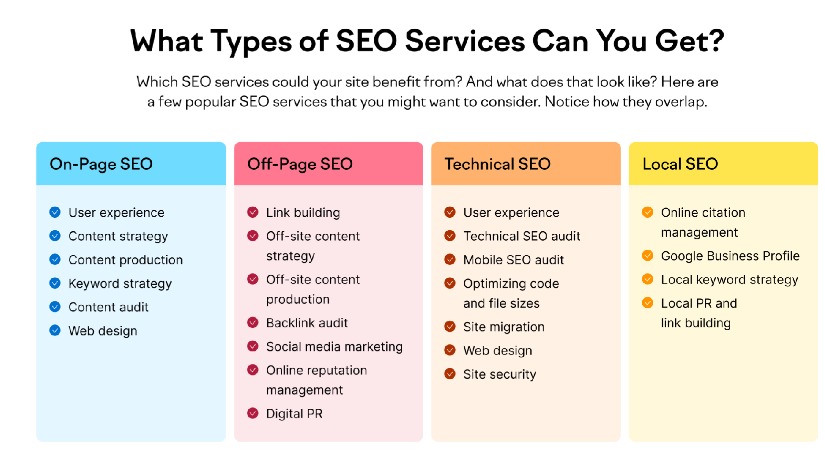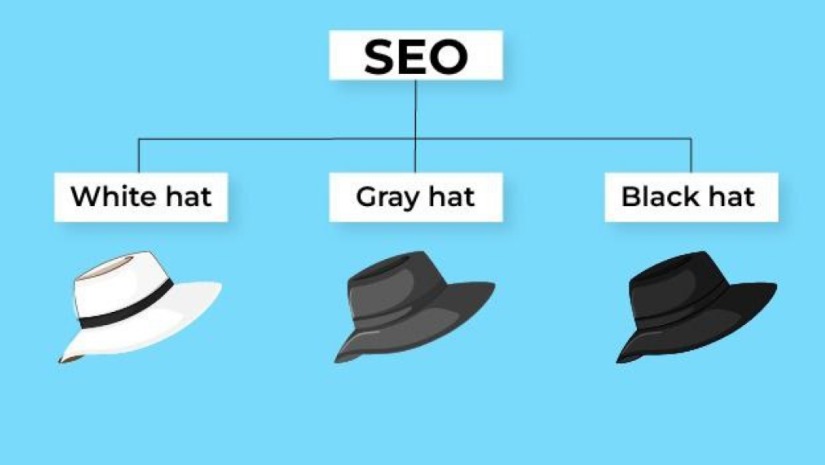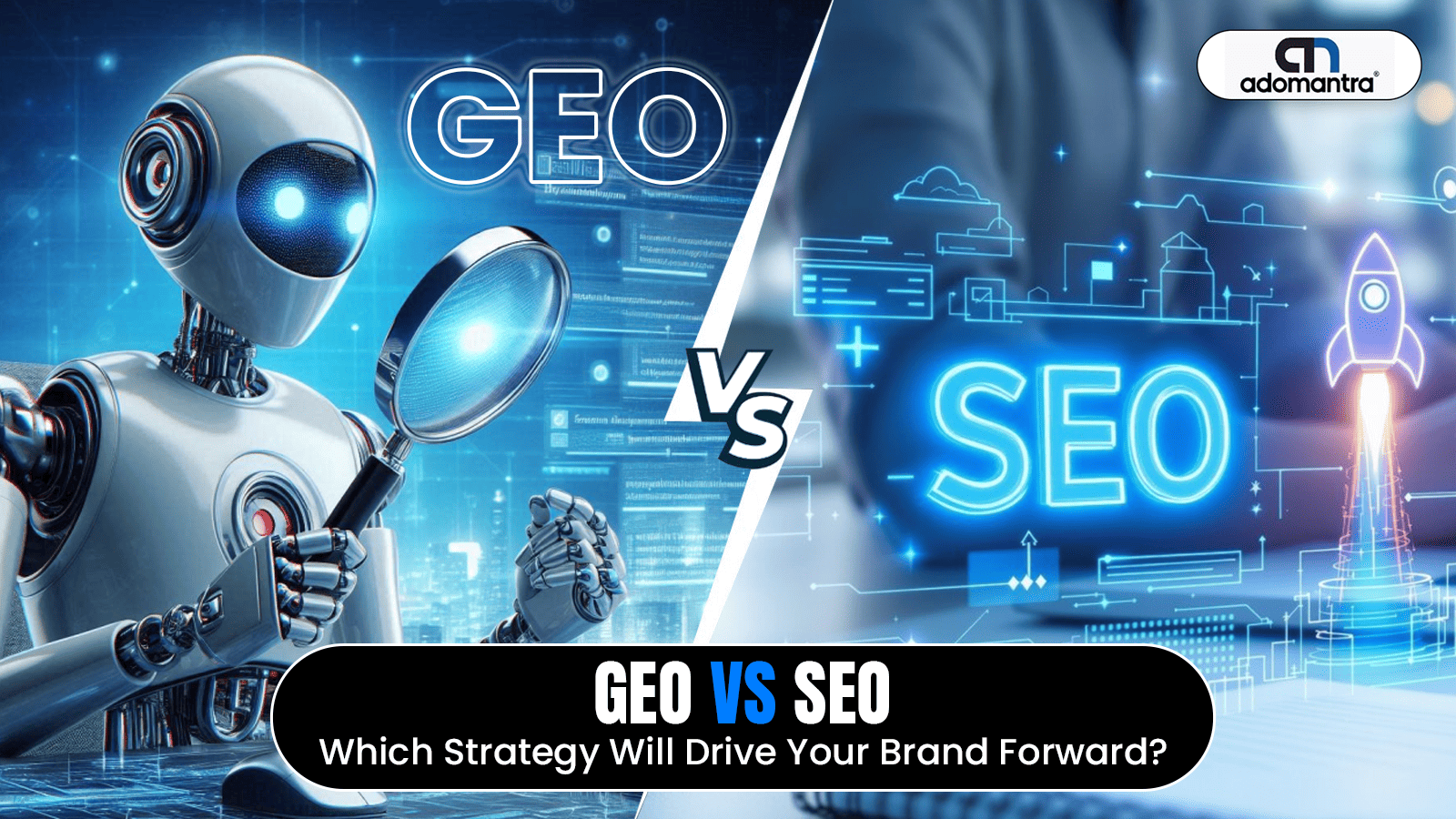
What Are The Different Types of SEO?
Introduction
Search Engine Optimization (SEO) is a crucial aspect of digital marketing that focuses on enhancing a website's visibility and organic traffic in search engine results. By optimizing various elements of a website and following best practices, SEO aims to improve a site's ranking on search engine pages, thereby increasing its chances of attracting relevant and valuable visitors.
SEO encompasses a wide range of strategies and techniques, each designed to improve different aspects of a website's performance in search engines. Let's explore the different types of SEO that digital marketers use to drive traffic and improve online visibility.
Digital Marketing Company: Boost Your Business with Expert Strategies. Top Digital Marketing Company for Effective Online Solutions. Trusted Digital Marketing Company for Brand Growth. Unleash Your Potential with a Reliable Digital Marketing Company. Elevate Your Online Presence with a Leading Digital Marketing Company."
SEO Services Provider: Boost Your Rankings with Expert Solutions. Discover Top-notch SEO Services for Your Business. Trustworthy SEO Services Provider for Enhanced Online Visibility. Unlock the Power of SEO with a Trusted Service Provider. Elevate Your Website's Performance with Proven SEO Services Provider.
16 Types of SEO in Digital Marketing Explained

1. On-Page SEO
On-page SEO refers to optimizing the content and HTML elements within a website to make it more search engine friendly. This type of SEO involves various factors such as keyword research, meta tags, heading tags, content optimization, URL structure, and internal linking. On-page SEO ensures that search engines can understand the content on a website, which helps improve its chances of ranking higher for relevant search queries.
Keyword research is one of the essential components of on-page SEO. It involves identifying and targeting specific keywords and phrases that users commonly use to find information related to the website's content. By strategically incorporating these keywords into the content, headings, and meta tags, the website becomes more relevant to search engine algorithms.
2. Off-Page SEO
Off-page SEO focuses on optimizing factors outside of the website itself to improve its online authority and reputation. The primary goal of off-page SEO is to build high-quality backlinks from other reputable websites. Search engines consider backlinks as votes of confidence, indicating that a website is valuable and authoritative. The more high-quality backlinks a website has, the higher its chances of ranking well in search results.
Off-page SEO techniques include guest blogging, influencer outreach, social media marketing, and link building. However, it's crucial to focus on obtaining natural and relevant backlinks rather than resorting to manipulative practices that violate search engine guidelines.
3. Technical SEO
Technical SEO deals with optimizing the technical aspects of a website to improve its crawlability, indexability, and overall performance. It ensures that search engine bots can access, crawl, and understand the website's content efficiently. Technical SEO encompasses various elements, such as website speed, mobile-friendliness, XML sitemaps, canonical tags, and robots.txt.
Improving website loading speed is a critical aspect of technical SEO, as faster websites tend to rank higher in search results. Mobile-friendliness is also essential, considering the growing number of mobile users accessing the internet. Websites that are not optimized for mobile devices may suffer in search rankings.
4. Local SEO
Local SEO is a specialized type of SEO that focuses on optimizing a website's visibility for location-based searches. This type of SEO is crucial for businesses with physical locations or those that serve specific localities. Local SEO techniques involve claiming and optimizing Google My Business listings, local keyword targeting, local citations, and customer reviews.
When users search for products or services in a specific area, search engines show relevant local results. By optimizing local SEO, businesses can target users within their geographic vicinity, driving foot traffic to their physical stores and increasing online visibility for location-specific queries.
5. E-commerce SEO
E-commerce SEO is tailored specifically for online stores. It involves optimizing product pages, category pages, and other elements unique to e-commerce websites. Keyword research for e-commerce SEO is more complex, considering the vast number of product variations and customer search intent.
Optimizing product titles, descriptions, images, and meta tags are essential components of e-commerce SEO. Additionally, improving the site's navigation, user experience, and site architecture can enhance overall SEO performance.
6. Mobile SEO
With the exponential growth in mobile device usage, mobile SEO has become increasingly important. Mobile SEO focuses on optimizing websites for mobile users, ensuring that the site's design and functionality adapt to various mobile devices' screen sizes. Responsive web design is a crucial aspect of mobile SEO, as it allows the website to adjust its layout and content based on the user's device, providing a seamless user experience.
Mobile page speed is also a significant factor in mobile SEO. Users expect fast-loading pages on their mobile devices, and search engines prioritize mobile-friendly and speedy websites in their mobile search results.
7. Voice Search SEO
Voice search is becoming more prevalent with the rise of virtual assistants like Siri, Google Assistant, and Alexa. Voice search SEO involves optimizing content to align with how users speak their search queries, as voice searches often have conversational phrasing and longer, more natural language compared to typed queries.
To optimize for voice search, content should focus on providing direct and concise answers to commonly asked questions. Structured data markup can also help search engines understand and present information from a website in voice search results.
8. Video SEO
Video content is increasingly popular, and optimizing videos for search engines can significantly enhance a website's visibility and user engagement. Video SEO involves various techniques to improve video visibility in search results, including video title optimization, keyword-rich descriptions, relevant tags, and the use of closed captions or transcripts to make the video content more accessible to search engines.
Additionally, hosting videos on platforms like YouTube can improve their discoverability, as YouTube is the second-largest search engine after Google. Embedding YouTube videos on a website can also positively impact its SEO.
9. Image SEO
Images are an integral part of web content, and optimizing them for search engines can boost organic traffic to a website. Image SEO involves using descriptive filenames, alt tags, and captions that include relevant keywords. This helps search engines understand the content of the images and potentially display them in image search results, driving additional traffic to the website.
Compressing images to reduce file size without compromising quality can also improve website loading speed, benefiting both user experience and SEO.
10. International SEO
For businesses targeting a global audience, international SEO is crucial. This type of SEO involves optimizing a website to cater to users from different countries and languages. International SEO requires a combination of technical elements like hreflang tags to indicate language and regional targeting and localized content to appeal to specific audiences.
It's essential to consider cultural nuances, local keywords, and search engine preferences in each target market. A well-executed international SEO strategy can help businesses expand their reach and connect with a broader global audience.
11. Organic SEO vs. Local SEO
Understanding the difference between organic SEO and local SEO is essential for businesses with both online and physical presences. Organic SEO focuses on improving a website's overall visibility and ranking in the organic (non-paid) search results for relevant queries. On the other hand, local SEO targets specific geographic areas, aiming to attract local customers and drive foot traffic to physical locations.
Local SEO efforts often include optimizing Google My Business listings, managing customer reviews, and ensuring consistent NAP (Name, Address, Phone number) information across all online platforms. Organic SEO, on the other hand, concentrates on broader keyword targeting and comprehensive content optimization.
12. SEO Analytics and Measurement
Monitoring and analyzing the effectiveness of SEO efforts are crucial to refining strategies and achieving better results over time. SEO analytics involves using tools like Google Analytics and Google Search Console to track website traffic, user behavior, keyword performance, and other essential metrics
13. White Hat SEO
White Hat SEO refers to ethical and legitimate optimization practices that comply with search engine guidelines and best practices. The focus of White Hat SEO is on creating high-quality, valuable, and relevant content for users. It aims to improve a website's rankings in a sustainable and long-term manner. White Hat techniques include keyword research, on-page optimization, quality link building, creating valuable content, and adhering to search engine rules.
14. Black Hat SEO
Black Hat SEO involves using unethical and manipulative techniques to improve a website's search engine rankings quickly. These techniques violate search engine guidelines and can lead to severe penalties, including getting the website banned from search engine results. Black Hat techniques include keyword stuffing, cloaking, hidden text, link spamming, and other tactics that aim to deceive search engines for quick gains.
15. Grey Hat SEO
Grey Hat SEO falls somewhere in between White Hat and Black Hat SEO. It involves using techniques that may not be explicitly against search engine guidelines but are still considered manipulative or risky. Grey Hat practices can provide short-term improvements in rankings but carry the risk of penalties if search engines update their algorithms or policies. Some examples of Grey Hat SEO include buying expired domains for backlinks, using private blog networks (PBNs), and participating in link exchanges.
16. Negative SEO
Negative SEO is an unethical practice in which individuals or competitors attempt to harm a website's search engine rankings deliberately. This can involve creating low-quality, spammy backlinks to the target website, copying its content and distributing it across the web, or even launching Distributed Denial of Service (DDoS) attacks. The goal of Negative SEO is to make the targeted website appear guilty of using Black Hat techniques, which can lead to penalties from search engines.
Conclusion
Search Engine Optimization is a multifaceted discipline, encompassing various types of strategies and techniques. By combining on-page, off-page, technical, local, mobile, voice search, video, image, and international SEO, businesses can create a robust and holistic approach to improve their website's visibility, attract targeted traffic, and achieve long-term success in the competitive online landscape.
Remember that SEO is an ongoing process, and staying up-to-date with the latest trends, algorithm updates, and user behaviors is essential to maintaining and improving a website's ranking and performance. Ethical and best-practice SEO efforts will not only yield positive results but also ensure sustainability and credibility in the eyes of search engines and users alike.








